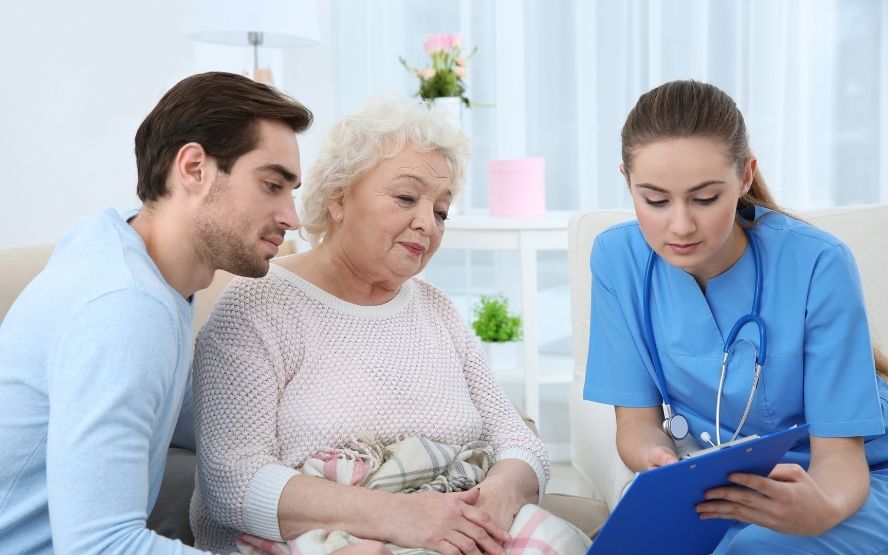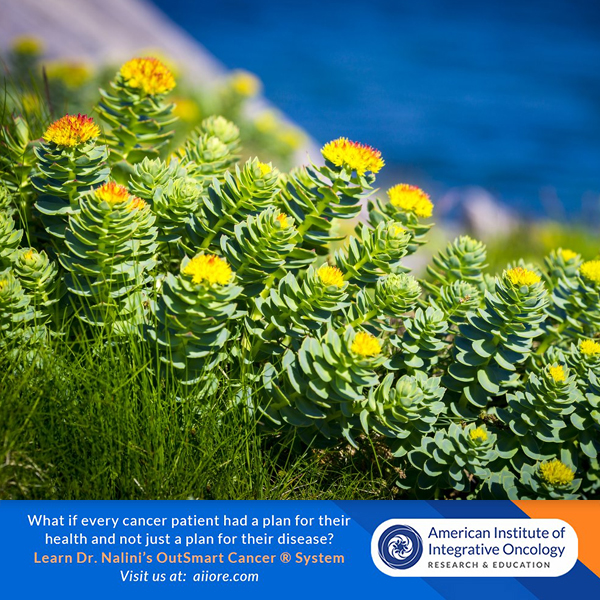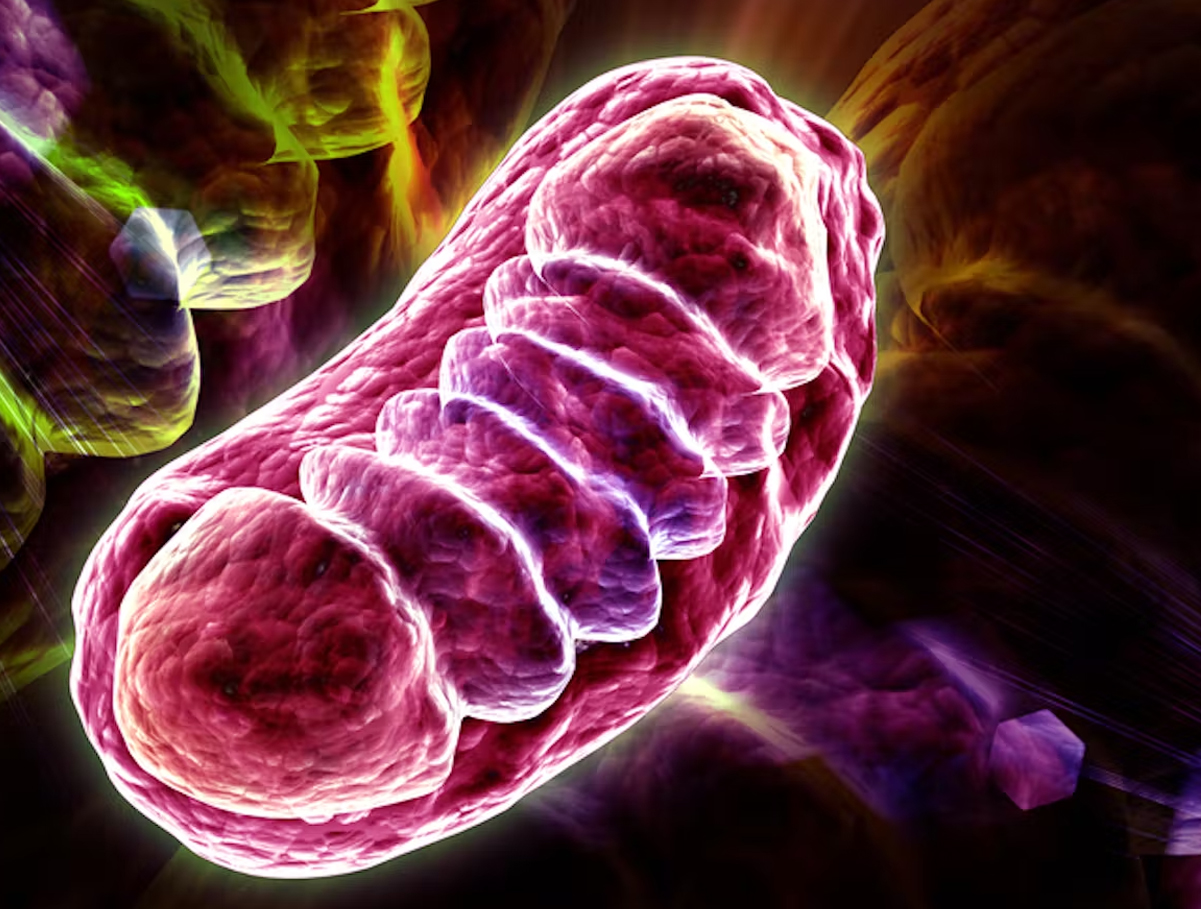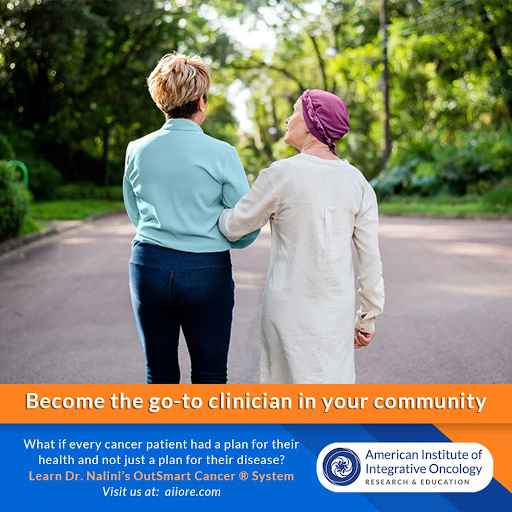Sarcopenia (loss of muscle mass) is an integral and deleterious component of cancer physiology. The metabolism of the tumor microenvironment is catabolic even at the earliest stages of cancer, long before the patient or care provider can see that muscle mass is declining. It is therefore my practice to include a plan for preserving and maintaining muscle mass in all patients. For those patients who have already lost significant muscle mass it is very challenging. When a patient has already suffered abnormal weight loss it is still possible to at least stop the decline and at best produce weight gain as muscle.
Tumor burden drives catabolism along with physiologic and behavioral contributors that include adverse effects of cancer treatments, nausea, loss of appetite, pain, changes in digestive function along with the emotional and traumatic stressors of the cancer experience that impact self care and eating behaviors.
Additionally, as the age demographic for cancer patients is typically patients over 50 years of age, the physiology of aging itself is already contributing to the loss of muscle mass that becomes more catabolic each year. The increased catabolic state that accompanies tumor burden compounds the fact of loss of muscle mass.

The guideline for optimized protein intake for older patients is about 1 gram of protein per pound of body weight. I therefore recommend that patients include 30 grams of protein three times daily from food at a minimum. And an additional 20-30 grams on top of that. The supplement can come in the form of free form amino acids or a serving of protein powder in water which are very easy for patients to implement.
Leucine is a primary branch chain amino acid that is the anabolic signal to skeletal muscle.
Leucine is abundant primarily in animal proteins. I recommend vegans consider a branch chain amino acid supplement that supplies 2.5-3 grams of leucine per serving. A person who eats 30 grams of animal protein will be getting a sufficient dose of leucine and does not need to supplement their meals.
Here is my general recommendation for supplements in addition to 30 grams of protein from food 3 times daily for retaining and building muscle mass:
Branch Chain Amino Acids 1 serving in water twice daily on empty stomach (containing 2.5-3.0g leucine per serving)
Some BCAA products also contain L-glutamine which also contributes to and is the most abundant amino acid in skeletal muscle tissue.
The use of L-Glutamine in cancer patients is controversial as some cancer cells change their metabolism to glutaminolysis using glutamine as the preferred fuel to product ATP (rather than glucose). However, oral glutamine supplementation is unlikely to amplify glutaminolysis as there is plenty of glutamine available in the large muscle depot at all times.
L-Carnitine 1.5-2.0 grams per day
If patients are having a difficult time eating sufficient protein with meals I will also include a serving of an Complete Essential Amino Acids Formulation along with the BCAA supplementation noted above.
Omega 3 Fatty Acids have also shown anabolic potential. They are already included in my OutSmart Cancer® Plans due to their multi-faceted contributions to healthy cell and mitochondrial membranes, inflammation control, reduction of thrombus risk and tumor cell adhesion so important in the tumor microenvironment. I recommend 2-6 grams daily of EPA-DHA in triglyceride form.
I also recommend that patients use Bone Broth which contains 10grams of protein per cup and often contains electrolytes as well depending upon how it is prepared. Bone broth contains glutamine which is very healing to the intestinal epithelium and is considered a therapeutic food for cancer patients experiencing intestinal inflammation secondary to their cancer treatments. Glutamine is one of the primary fuels for the colonocytes and has been in wide use for repair and to restore normal barrier function even in the hospital setting. The primary protein in bone broth is collagen derived and is not very high in leucine. Collagen is not the best form of protein for muscle mass, but it is still a complete protein and an easy source for patients who may drink 2-4 cups a day as part of their daily fluid intake. 2-4 cups of bone broth daily would provide an additional 20-40 grams of protein.
I also prescribe protein shakes with 20-30 grams of protein per shake. This is very effective as many cancer patients become uninterested in food and food preparation, lose their appetite, become nauseous or suffer poor self care due the exhaustion and overwhelm of cancer and cancer treatments. A protein shake can be designed to be a meal replacement or a supplement to calories and macronutrients. Whey protein has been shown to be an excellent form for building muscle mass.
Muscle mass is also a function of muscle use and weight bearing. Therefore an exercise program should also be in place, not only for healthy muscle mass but also because regular exercise has been shown to increase survival and reduce not only cancer related, but all cause mortality and of course is good for stress management and emotional well being. The statistics on including a minimum of 30 minutes of exercise daily are compelling. I ask my patients to engage in four 15 minute walks daily to accumulate one hour of walking. Almost all patients can accomplish this.
Additionally, patients must include strength training with resistance.
Strength Training can be done with weights, whole body weight or resistance bands at least twice per week. There are many excellent videos to be found only for every age group and level of fitness. No matter how inexperienced or out of shape, anyone can begin. This makes a huge difference in strength vs frailty in cancer patients and elderly patients and should be part of standard of care within a health model.
I also want to highly recommend the work of Dr. Gabrielle Lyon DO who has devoted herself to the what she calls “Muscle-Centric Medicine”. Her book, Forever Strong: A New Science Based Strategy for Aging Well” written for the general audience. She clearly explains the science and provides concrete and clear guidelines for eating and exercise to preserve and build muscle at every stage of life. She also has additional resources for clinicians.
Selected References
Exercise and Cancer Survivorship (book) 2010 ISBN : 978-1-4419-1172-8 https://link.springer.com/book/10.1007/978-1-4419-1173-5
Matei B, Winters-Stone KM, Raber J. Examining the Mechanisms behind Exercise's Multifaceted Impacts on Body Composition, Cognition, and the Gut Microbiome in Cancer Survivors: Exploring the Links to Oxidative Stress and Inflammation. Antioxidants (Basel). 2023 Jul 14;12(7):1423. doi: 10.3390/antiox12071423. PMID: 37507961; PMCID: PMC10376047.
Anjanappa M, Corden M, Green A, Roberts D, Hoskin P, McWilliam A, Choudhury A. Sarcopenia in cancer: Risking more than muscle loss. Tech Innov Patient Support Radiat Oncol. 2020 Nov 9;16:50-57. doi: 10.1016/j.tipsro.2020.10.001. PMID: 33385074; PMCID: PMC7769854.
Williams GR, Dunne RF, Giri S, Shachar SS, Caan BJ. Sarcopenia in the Older Adult With Cancer. J Clin Oncol. 2021 Jul 1;39(19):2068-2078. doi: 10.1200/JCO.21.00102. Epub 2021 May 27. PMID: 34043430; PMCID: PMC8260902.
Larsson L, Degens H, Li M, Salviati L, Lee YI, Thompson W, Kirkland JL, Sandri M. Sarcopenia: Aging-Related Loss of Muscle Mass and Function. Physiol Rev. 2019 Jan 1;99(1):427-511. doi: 10.1152/physrev.00061.2017. PMID: 30427277; PMCID: PMC6442923.
D'Hulst G, Masschelein E, De Bock K. Resistance exercise enhances long-term mTORC1 sensitivity to leucine. Mol Metab. 2022 Dec;66:101615. doi: 10.1016/j.molmet.2022.101615. Epub 2022 Oct 14. PMID: 36252815; PMCID: PMC9626937.
Melone MAB, Valentino A, Margarucci S, Galderisi U, Giordano A, Peluso G. The carnitine system and cancer metabolic plasticity. Cell Death Dis. 2018 Feb 14;9(2):228. doi: 10.1038/s41419-018-0313-7. PMID: 29445084; PMCID: PMC5833840.
Takagi A, Hawke P, Tokuda S, Toda T, Higashizono K, Nagai E, Watanabe M, Nakatani E, Kanemoto H, Oba N. Serum carnitine as a biomarker of sarcopenia and nutritional status in preoperative gastrointestinal cancer patients. J Cachexia Sarcopenia Muscle. 2022 Feb;13(1):287-295. doi: 10.1002/jcsm.12906. Epub 2021 Dec 22. Erratum in: J Cachexia Sarcopenia Muscle. 2023 Apr;14(2):1142. PMID: 34939358; PMCID: PMC8818668.
Reidy PT, Rasmussen BB. Role of Ingested Amino Acids and Protein in the Promotion of Resistance Exercise-Induced Muscle Protein Anabolism. J Nutr. 2016 Feb;146(2):155-83. doi: 10.3945/jn.114.203208. Epub 2016 Jan 13. PMID: 26764320; PMCID: PMC4725426.
Moro T, Brightwell CR, Velarde B, Fry CS, Nakayama K, Sanbongi C, Volpi E, Rasmussen BB. Whey Protein Hydrolysate Increases Amino Acid Uptake, mTORC1 Signaling, and Protein Synthesis in Skeletal Muscle of Healthy Young Men in a Randomized Crossover Trial. J Nutr. 2019 Jul 1;149(7):1149-1158. doi: 10.1093/jn/nxz053. PMID: 31095313; PMCID: PMC7443767.

















